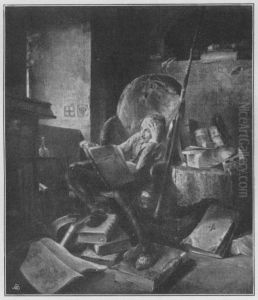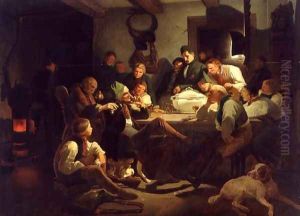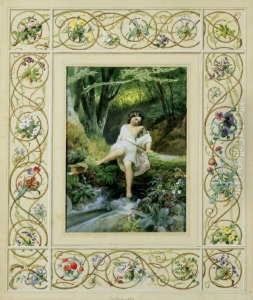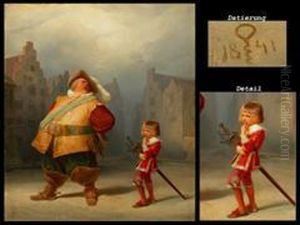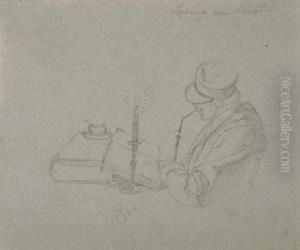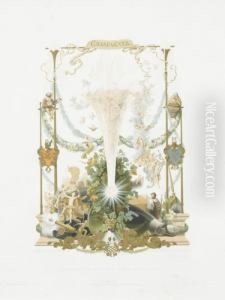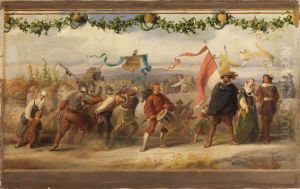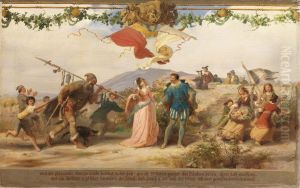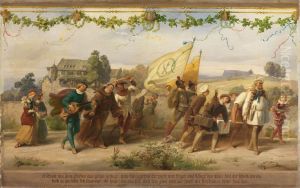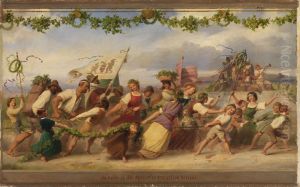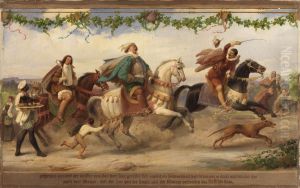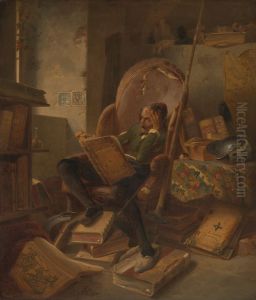Adolf Schrodter Paintings
Adolf Schrödter was a German painter and illustrator, known for his works that often carried a humorous or satirical undertone. Born on June 28, 1805, in Schwedt, Brandenburg, Schrödter began his artistic education at the Berlin Academy under the tutelage of Wilhelm Wach and later continued his studies in Düsseldorf, which at the time was a vibrant center for art and attracted many aspiring artists.
Schrödter became associated with the Düsseldorf school of painting, a group that was characterized by its attention to detail, color, and emphasis on historical and genre painting. While he initially worked on historical subjects, Schrödter gained popularity for his genre scenes and caricatures, often displaying a keen sense of humor and a talent for storytelling through his art.
His works often reflect the romantic spirit of the era, with an emphasis on emotion, individualism, and a fascination with the past. One of his well-known works is the painting 'Der Wilde Jäger' (The Wild Huntsman), which was based on the poem by Gottfried August Bürger. Schrödter's ability to combine narrative with visual art made his illustrations particularly successful. He illustrated works for various authors, including Cervantes's 'Don Quixote,' which further cemented his reputation as a skilled draftsman and painter.
Throughout his career, Schrödter was a respected member of the artists' community and influenced the development of younger artists. He was also involved in the establishment of art associations and participated actively in the cultural life of Düsseldorf. Schrödter's contributions to German art were recognized during his lifetime, and he was awarded several honors, including a professorship.
Adolf Schrödter passed away on December 9, 1875, in Düsseldorf. His legacy lives on through his humorous and insightful artworks, which continue to be appreciated for their historical value and artistic merit. Schrödter's work is a testament to the rich cultural milieu of 19th-century Germany and offers a unique glimpse into the society and its sentiments during that period.
